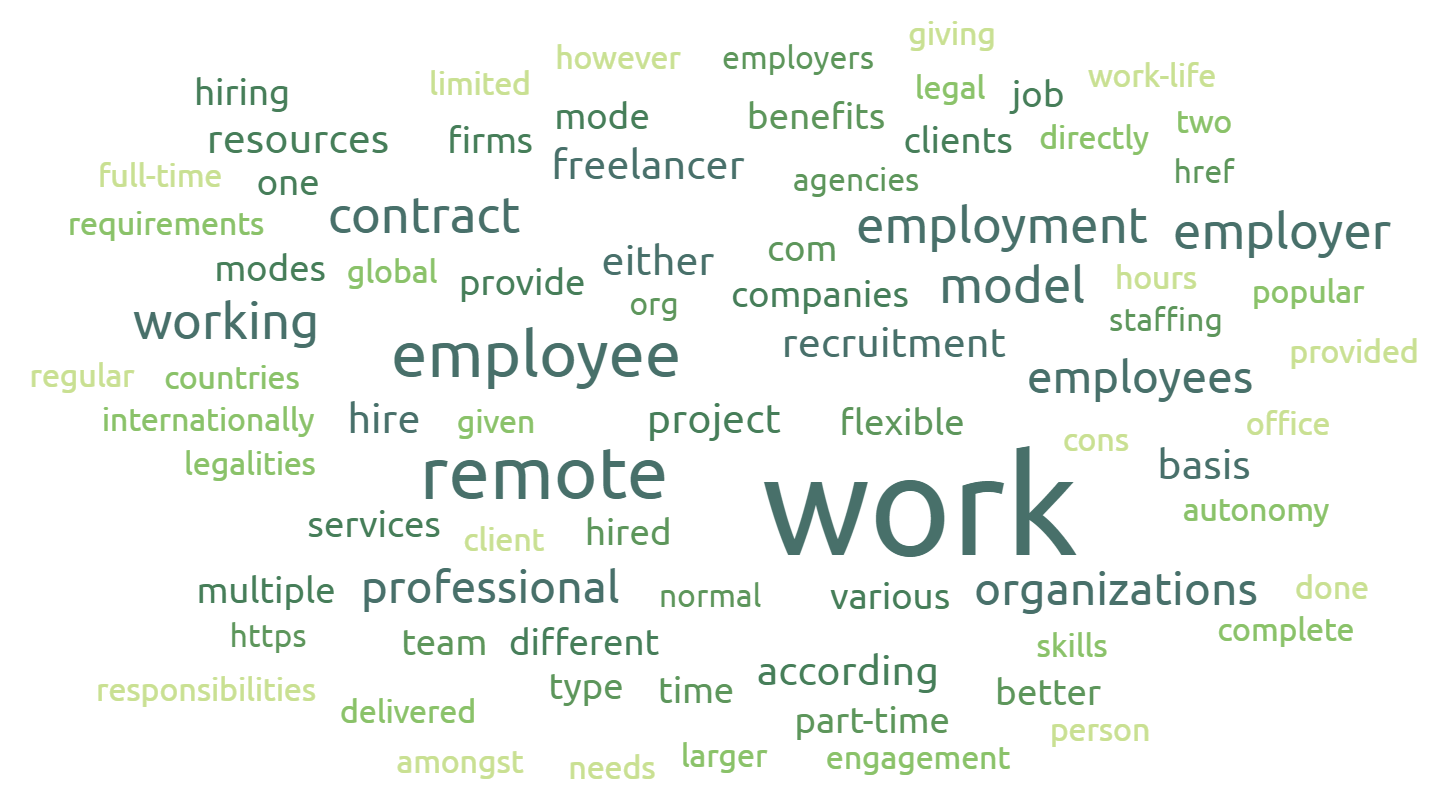Modern organizations are reshaping the future of work by the different modes of engagement they are opting for. Pinterest, Shopify and Fujitsu are just a a few examples. Airbnb has recently announced that it is joining in. After working from home has become the new normal, various firms and consultancies have taken it up upon themselves to facilitate remote work in various forms. These are efficiently, facilitating and paving the path for the future of work.
The Post-Covid era has seen multiple PEOs (Professional Employment Organisations) and EORs (Employers of Record) spring up around the world to take remote work and services up a notch. These are companies working as recruitment agencies or staffing agencies. These are a network of organizations that have a legal entity in many different countries. They allow their clients to hire any candidate internationally, handling the legalities of the countries in check.
Each of these have their own unique way of functioning. They cater to local and global job markets according to their scope and requirements. The allow many modes to engage with employees either directly or provide HR solutions for clients. Below we will list the most popular modes of engaging employees of the future. Many employers are using one or some of these to bring their international teams together.
Project Based Work
In this mode of employment, a company hires for one particular project. It could be a single person or a team. The hired employee(s) work as a part of a larger team and complete the targeted work. This mode has two aspects – a time-bound contract and the flexible project.
The benefits of this mode of work engagement is that the professional gets more autonomy on the way he/she works. The working schedule is often flexible. This allows a better work-life balance and no hustle for visiting an office in-person if the work is completely remote.
Freelance Work

In this type of engagement, the employee is hired for multiple projects. However, as a freelancer, ie, he/she has complete autonomy over delivering the work assigned. This professional is not answerable of any department (except occasionally on an advisory basis). The person decides the working hours and the mode of work as well delivery parametric. This model, however, has certain cons of its own.
The employee does the freelance work at times on a need-to-know basis, which can turn out to be counterproductive in the larger scheme of things for the client. The output may not match the amount of productivity that is expected or what the established norms. Entrepreneurs should consider these aspects seriously.
Organizations like freelancer.com, fiver.com and upwork.com are dominating this field and have the chunk of the business of match-making in project-based and hourly base work for a variety of fields of work. There are a few focused organizations that specialize with creativity or technical human resources. Legalities are easier to handle for these two but loyalty of the person carrying out the tasks is limited.
Part-Time Work Model
In this model of hiring remote workers, the client employs the talent resource on a part-time basis. It specifies the number of hours of work (fixed or flexible). The major difference here is that the employer is responsible to pay for the time of the employee. Even if enough work has not been provided to the employee, the payment has to be made.
Despite this, this is quite popular amongst mode worldwide. Mainly because the employee has more interaction with the permanent staff while maintaining the remote position. If the contract allows, the employee can take on multiple part-time positions at various firms. Often the EOR service provider hires the employee on behalf of the employer. This saves the employer the costs and trouble of operating in a foreign land.
Full-Time Work Model
This mode of employment usually involves a professional to sign up for work at only one employer for full-time work. Traditionally, this used to be 9-5 , but going future we see this becoming more and more flexible. If it does not hamper the working efficiency more and more employers are not constricting the workers. Remote or local, the wage is often the same. The company saves on a lot of overhead costs such as office space if they allow remote work. It also saves employee travel time & costs. It thus ensures a more balanced work-life approach to employment in the 21st Century.
This is the method being used by most remote-first companies that hire talent internationally to form remote teams. They do meet up once in-a-while to create repo and socialize.
Conclusively, we see that all these different modes of recruitment tend to have their own pros and cons. Each employer has to weigh the pros against the cons in each of these models. Choose according to their own needs. This improves employment opportunities for professionals at a global level. It creates a win-win situation for both the employer and the employee. Hence allowing organizations to compete where they were not able to before. It has certainly been deemed better than regular working models that are employed so far.
If you are considering this model but are not sure how to carve the path for the future of your company, we at Remote Resources, are here to guide you through this journey. We are a remote team of experts and enthusiasts that are helping others #GoRemote! We are passionate about it and understand the intricacies related to it.
